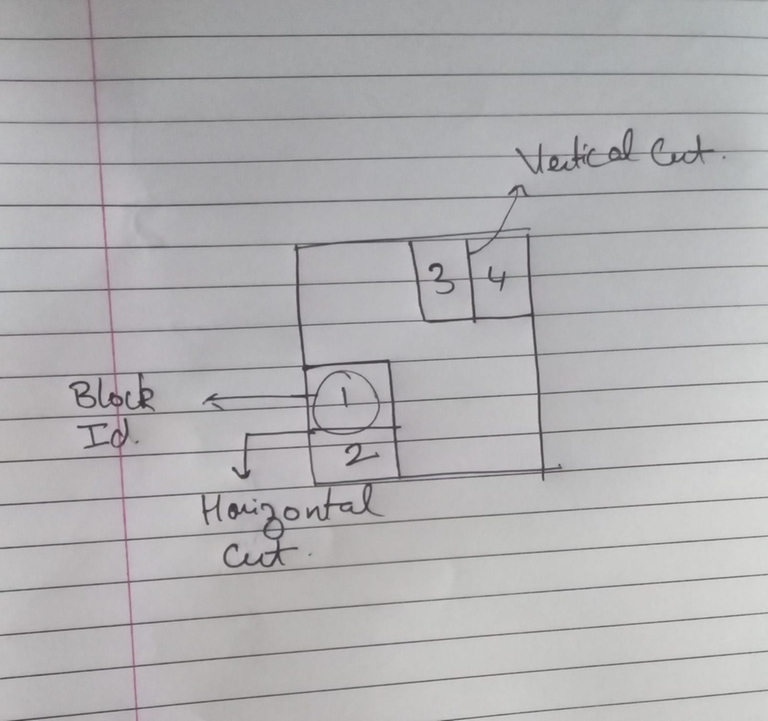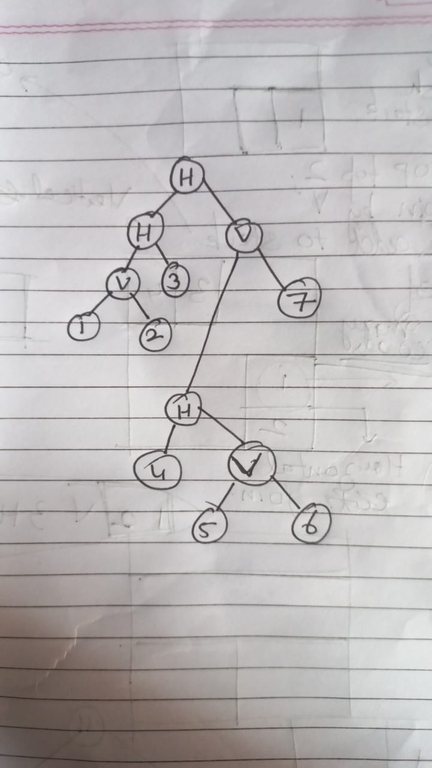

The info I am given : block_ID, block_width, block_height as well as how the cuts between the rectangles are(horizontal or vertical); for example two rectangles can be joined by a horizontal cut or a vertical cut. See above picture for greater clarity(H symbolizes horizontal cut and likewise V for vertical cuts). The order of cuts on the blocks can be represented as a normalized polish expression or a skewed binary tree.
What i tried till now : I tried using a stack based approach where I would push the digits in the polish expression into a stack and would pop the top 2 elements from the stack when I came across a character(H OR V) and then join these 2 blocks (take max of height and add the widths for vertical cuts and vice versa for horizontal) and push this new 'edited' block into the stack again.The issue arises when I try to join the plots of 2 different subtrees.
Code for the same :
def plot_floorplan_area(blocks, polish_expression,num_blocks):
# Initialize the plot
curmax=num_blocks
fig, ax = plt.subplots()
ax.set_xlim(0, xmax+5)
ax.set_ylim(0,ymax+5)
ax.set_xlabel('Width')
ax.set_ylabel('Height')
ax.set_title('Floorplan')
x, y = 0, 0
stack=[]
for c in polish_expression:
if c.isdigit():
stack.append(int(c))
c=int(c)
c-=1
curwid=blocks[c][1]
curht=blocks[c][2]
left_bottom=(x,y)
rect = Rectangle(left_bottom, curwid, curht, linewidth=1, edgecolor='r', facecolor='none')
center_x = left_bottom[0] + curwid / 2
center_y = left_bottom[1] + curht / 2
ax.text(center_x, center_y, str(blocks[c][0]), ha='center', va='center', fontsize=12)
ax.add_patch(rect)
elif c=='H':#horizontal cut.
el1=stack.pop()
el2=stack.pop()
el1-=1
el2-=1
curwid=max(blocks[el1][1],blocks[el2][1])
curht=blocks[el2][2]+blocks[el1][2]
rect = Rectangle(left_bottom, curwid, curht, linewidth=0, edgecolor='none', facecolor='none', alpha=0)
x+=curwid
y+=curht
curmax+=1
stack.append(curmax)
elif c=='V':
el1=stack.pop()
el2=stack.pop()
el1-=1
el2-=1
curht=max(blocks[el1][2],blocks[el2][2])
curwid=blocks[el2][1]+blocks[el1][1]
rect = Rectangle(left_bottom, curwid, curht, linewidth=0, edgecolor='none', facecolor='none', alpha=0)
x+=curwid
y+=curht
curmax+=1
stack.append(curmax)
plt.grid(True)
plt.show()
Structure of a row of the blocks matrix : {ID,width,height,area} .
Could anyone tell me alternate approaches/corrections to the existing approach as this one is yielding wrong outputs.
Example of a polish expression : 1 2 V 3 H 4 5 6 V H 7 V H. It is basically the post order traversal of the above tree.

This is what the final floorplan should look like.










